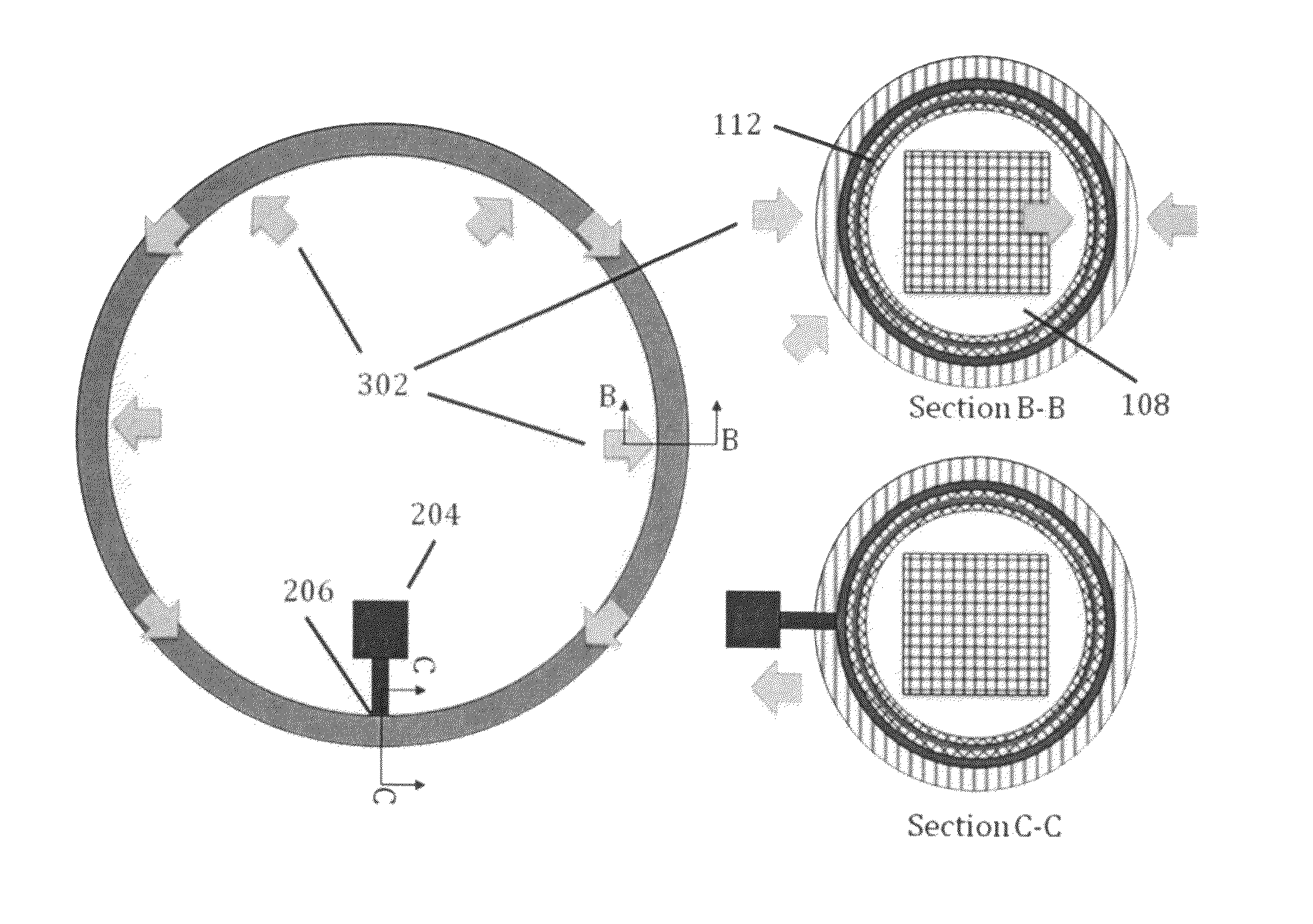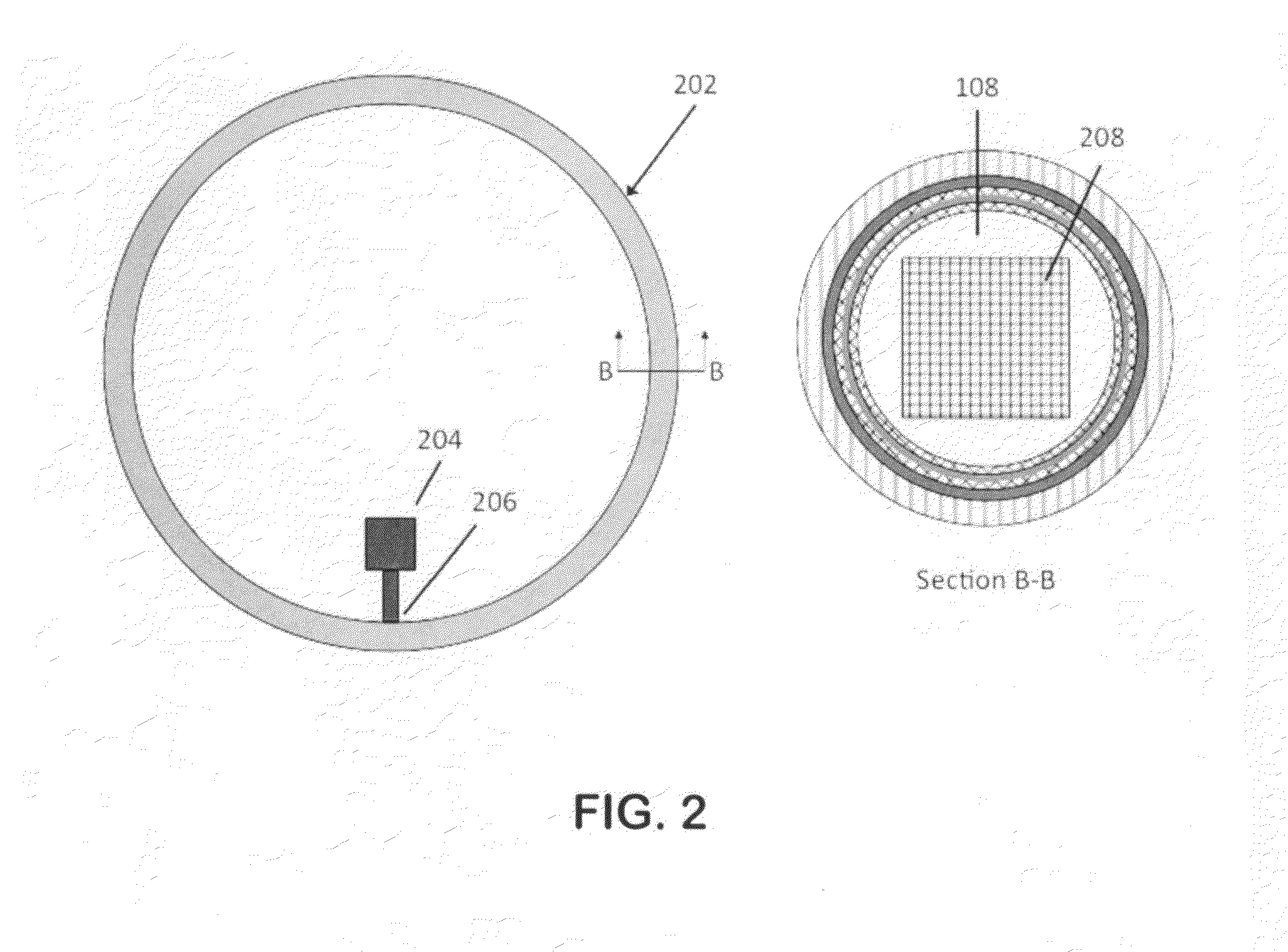Method of both cooling and maintaining the uniform temperature of an extended object
a technology of extended objects and uniform temperature, applied in the direction of domestic cooling apparatus, container discharge methods, superconducting magnets/coils, etc., can solve the problems of increasing vapor pressure, using cryostats, and large superconducting coils cannot be cooled using cryocoolers alone, etc., and achieve the effect of rejecting
- Summary
- Abstract
- Description
- Claims
- Application Information
AI Technical Summary
Benefits of technology
Problems solved by technology
Method used
Image
Examples
Embodiment Construction
—PREFERRED EMBODIMENT—FIGS.
[0031]FIG. 1 shows the prior art of a typical heat pipe assembly 106 conducting heat between an object to be cooled 102 and a cold reservoir 104. A cross-section (A-A) shows one particular embodiment of a typical heat pipe, consisting of an inner vapor space 108 and a number of layers at the wall, shown in the inset. This particular embodiment shows an inner mesh grid 110, a liquid layer of the working fluid 112, an outer mesh grid 114, the wall of the heat pipe 116 and an outer layer of thermal insulation 118.
[0032]FIG. 2 shows a preferred embodiment of the current invention, consisting of a closed heat pipe 202 and a cryocooler 204 with its cold tip 206 in contact with the wall of the heat pipe at a single location, which will be the coldest point within the heat pipe. Cross-section B-B shows a similar heat pipe embodiment as in FIG. 1, however the object to be cooled 208 is shown embedded within the vapor space 108 of the heat pipe. The wall layers are ...
PUM
 Login to View More
Login to View More Abstract
Description
Claims
Application Information
 Login to View More
Login to View More - R&D
- Intellectual Property
- Life Sciences
- Materials
- Tech Scout
- Unparalleled Data Quality
- Higher Quality Content
- 60% Fewer Hallucinations
Browse by: Latest US Patents, China's latest patents, Technical Efficacy Thesaurus, Application Domain, Technology Topic, Popular Technical Reports.
© 2025 PatSnap. All rights reserved.Legal|Privacy policy|Modern Slavery Act Transparency Statement|Sitemap|About US| Contact US: help@patsnap.com



